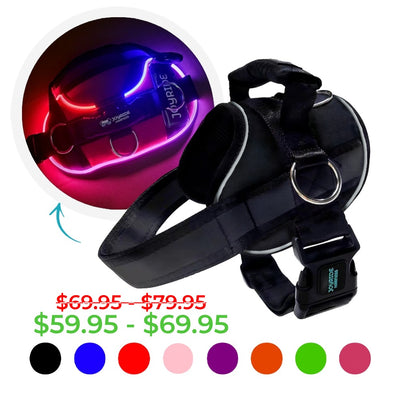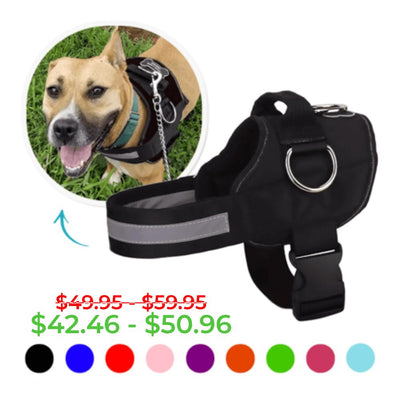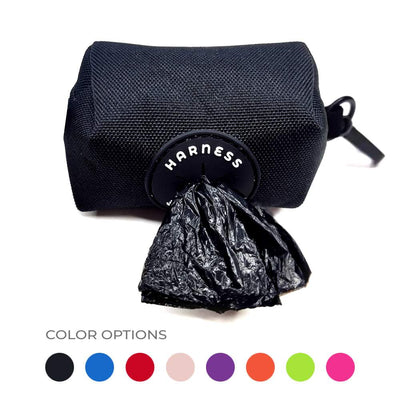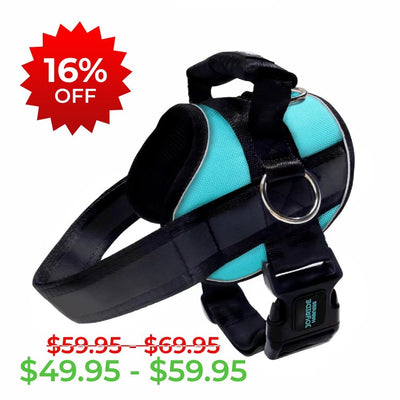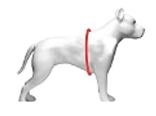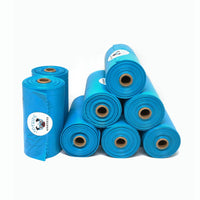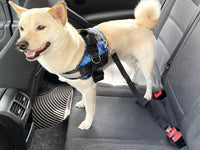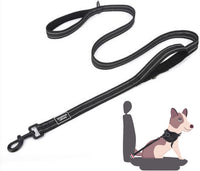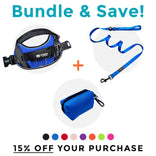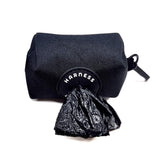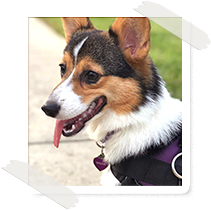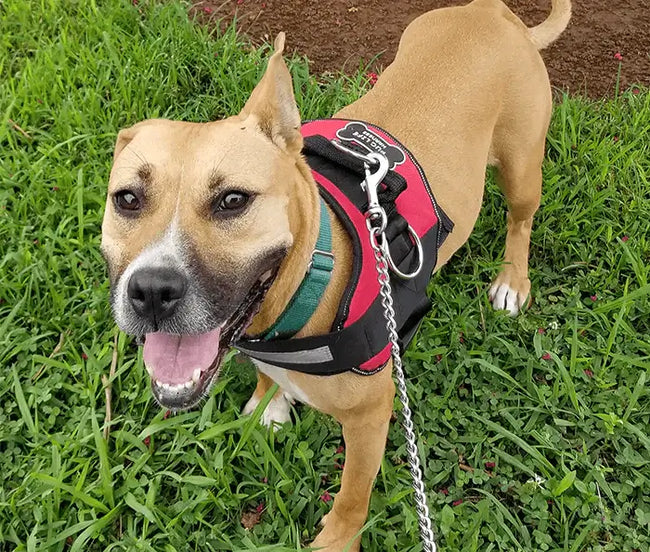How to Groom A Dog at Home: A Beginner’s Guide
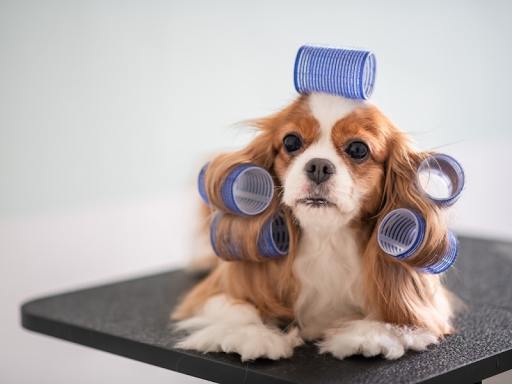
Got a new dog or dealing with a different breed's grooming? Grooming isn't just for cute pics – it keeps your dog happy and healthy.
Feeling overwhelmed? No worries. Whether you've always had Beagles and got a Shih Tzu, or just want to save some cash, our guide has you covered. We'll walk you through basic grooming and toss in some pro tips.
So, whether it's bonding or picking up a new skill, we've got the scoop on keeping your furry friend looking and feeling great!
Grooming Your Dog 101
Grooming is an umbrella term that covers various activities, each with its own importance and technique. Just as we have our hair, skincare, and oral routines, our furry friends also need regular care to keep them looking and feeling their best.
Here are some of the most important aspects of grooming a dog and why they are important. Once you’ve mastered these tasks, you will know the basics of how to groom a dog at home!
1. Brushing
All dogs need to be brushed, no matter the length of their coat. The exception to this rule is if you have a hairless dog breed, such as the American Hairless Terrier (although they have their own unique set of skincare needs). Regular brushing ensures a healthy, shiny coat, which is something we all want for our precious pups.
Here are the benefits of frequent brushing:
- Distributes natural oils, which keeps the coat looking lustrous.
- Prevents matting and tangling, especially crucial for long-haired breeds.
- Reduces shedding, a blessing for your furniture and outfits!
As a general rule, short-haired dogs should be brushed weekly. While they won’t tangle as easily as longer-haired dogs, regular brushing will help reduce shedding around the house. Medium- and long-haired breeds should be brushed daily.
When it comes to learning how to groom your dog at home, selecting the right brush is essential. From slicker and pin brushes to bristle brushes and metal combs, the choice depends on your dog's coat type. A quick chat with a pet store expert or vet can provide guidance on the best grooming tools for your dog.
Note: If you have a poodle, poodle mix, or another breed with a high-maintenance coat, you’ll want to look up line brushing. This technique is key if you want to keep your dog mat-free.

2. Bathing
How often do you shower? Every day? A few times a week? Well, your dog doesn't need that many baths, but a regular bathing routine is key for their grooming game. It's not just about making them smell good; it's also about keeping their skin healthy.
It depends on stuff like their breed, how much they run around, and any health issues. Usually, healthy dogs only need a bath every 1 to 3 months to keep the stink and oil in check. Show dogs, aiming for that top-notch look, might get more baths.
If your pup has soft, curly hair or doesn't shed, they might need more frequent baths because they're dirt magnets. Short-coated buddies have it easy and only need a few baths a year, unless they roll in something nasty or have a health condition that calls for special baths.
💡 BONUS TIP: Always use a dog shampoo – human ones can mess with their skin's balance.
3. Nail Trimming
Those little taps on your floor? That's a sign it's time for a trim! Regular nail trimming prevents painful ingrowths, ensures proper foot posture and gait, and reduces damage to furniture (and your skin during playful moments).
When it comes to giving your dog a pawdicure, you can choose clippers, grinders, or even scratch pads to keep your dog’s nails short. No matter which method you choose, be sure to familiarize your dog with the tool before starting, and always be cautious to avoid the quick. Many dogs don’t like their feet touched, let alone have their nails clipped, so it might take some patience and training on your part to do this at home.
For the best nail maintenance, you should trim them frequently to prevent them from getting too long. If your dog has naturally long quicks, you may need to take a little bit off more frequently until the quick recedes and you can trim them shorter.
What happens if you accidentally cut the quick? If your dog starts bleeding, immediately apply pressure with a clean towel or paper towel for two minutes. If you have styptic powder in your doggie first-aid kit, you can use that to stop the bleeding. Or, in a pinch, cornstarch should work!
4. Ear Cleaning
Whether they stand straight up or droop down low, few things are more irresistible than a dog’s ears (except perhaps their boopable nose). However, a dog's ears can be a haven for bacteria if not cleaned regularly.
Some dogs need more frequent ear cleaning than others. Certain dogs and breeds are just more prone to ear infections, and they benefit from more frequent cleanings. Cocker Spaniels and Basset Hounds are breeds notorious for ear infections, although any dog of any breed (or mix) can get them.
So, when is it time to clean your dog’s ears? As a general rule, once a month is good for most ear cleaning. Dogs with drop ears and those who swim often may require more frequent cleanings, such as once a week or every other week. To clean, use a vet-recommended ear solution and a cotton ball. Never insert anything into the ear canal; a gentle wipe on the visible parts does the trick!
Watch for signs of infections like redness, excessive wax, or a foul smell. It’s always best to check with a vet if your dog's ears appear to be inflamed or particularly nasty.
5. Teeth Cleaning

You likely brush your teeth at least twice a day, but when was the last time you brushed your dog's teeth? Like humans, a dog's pearly whites need care, too! Regular brushing prevents gum disease and tooth decay, eliminates bad breath (more pleasant puppy kisses!), and reduces the risk of serious health issues linked to dental problems.
Professionals recommend brushing three times per week as the minimum recommendation to help remove plaque and prevent tartar accumulation.
Simply use dog-specific toothpaste and a suitable brush or finger brush. Start slow, and soon, it'll be a part of your dog's routine. It’s best to start when they’re puppies, but starting later in life is better than not brushing your dog’s teeth at all!
5. Hair Trimming
Regular haircuts keep your dog looking sharp and help with hygiene, especially around the eyes, ears, and paws. Not every breed needs a full trim, but tidying up around the paws (aka "Grinch feet") is a good call. It makes it easier to spot ticks, burs, or health issues like hyperkeratosis.
Trimming can be tricky, especially with a furry breed prone to mats. Take it slow, watch online tutorials, and use sharp scissors and dog grooming clippers. Check the manual for clipper lengths. If you're unsure, seek guidance from tutorials or a pro groomer.
Safety first! If your pup is a wiggle monster, leave haircuts to the pros until they're cool with the grooming routine.

9 Tips for Grooming Your Dog at Home Like a Pro
Now that you know the basics of how to groom a dog, you might feel confidence to try it at home. If you’ve decided to try grooming your dog at home, these tips will help you!
- Start Young: If possible, initiate the grooming routine when your dog is still a puppy. This accustoms them to the process, making grooming sessions much easier as they grow.
- Gather the Right Tools: Invest in a set of good-quality grooming tools that suit your dog's breed and coat type. Having the right tools makes a massive difference in the grooming experience.
- Create a Calm Environment: Choose a quiet space free from distractions to set up your grooming station. Playing soft music or offering treats can create a positive and calming atmosphere.
- Use Treats Wisely: Make use of treats to reward calm behavior during grooming sessions. This helps in building a positive association with grooming.
- Be Gentle: Always approach grooming with a gentle touch. Avoid pulling on tangles or mats, and instead work patiently to untangle them without causing distress.
- Regular Breaks: Allow for regular breaks, especially during long grooming sessions, to prevent your dog from becoming too stressed or tired.
- Consult Online Resources or Classes: Don't hesitate to consult online resources or even attend grooming classes to enhance your grooming skills and knowledge.
- Seek Vet Advice for Skin and Coat Care: If you're unsure about the products to use or the grooming requirements of your dog, consult with a vet for personalized advice.
- Praise and Cuddle Time: Once the grooming session is complete, shower your dog with praise and some cuddle time to end positively.
Remember, the key to successful home grooming is patience and practice! As you progress, you'll notice that both you and your dog will start to enjoy these sessions, fostering a deeper bond and understanding between the two of you.
Keep Your Dog Safe and Stylish with Joyride Harness
At Joyride Harness, we are a community of dog lovers committed to the safety and well-being of your furry best friends. Our support doesn't end with providing you with the best dog harnesses on the market; we are here to accompany you at every step of dog ownership, ensuring your dog lives a healthy, happy, and safe life.
Because every joyride is better with a well-groomed and happy dog by your side!

